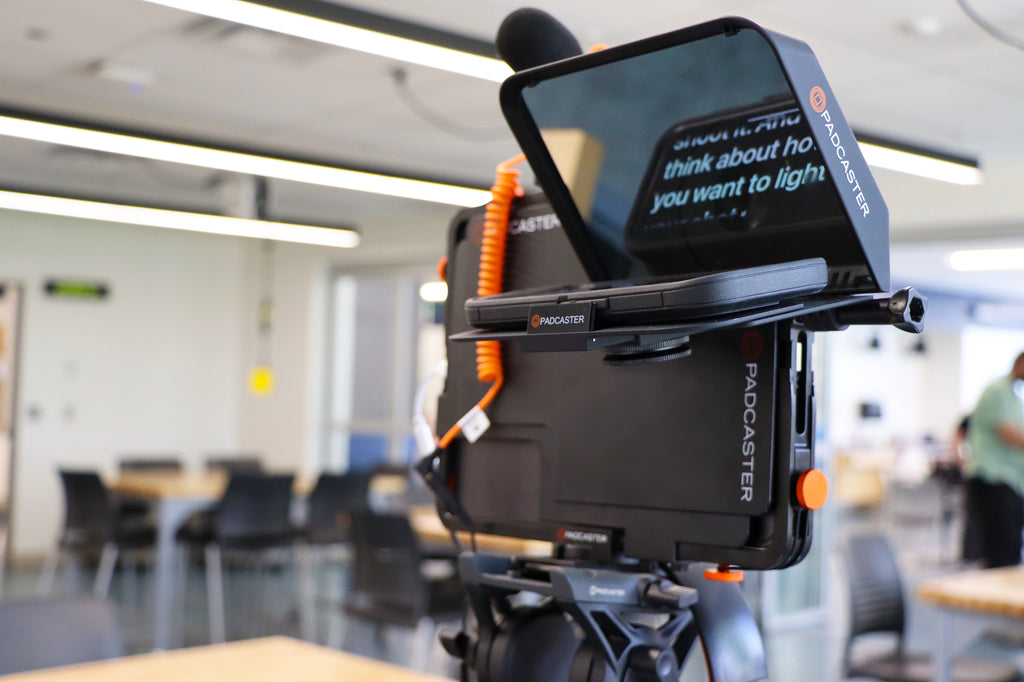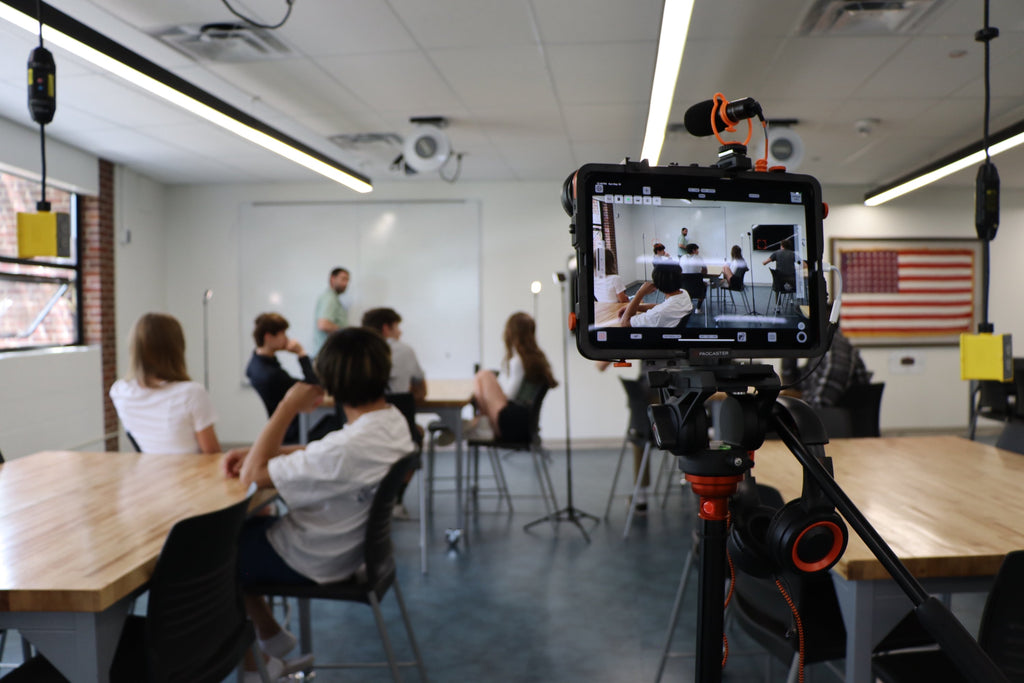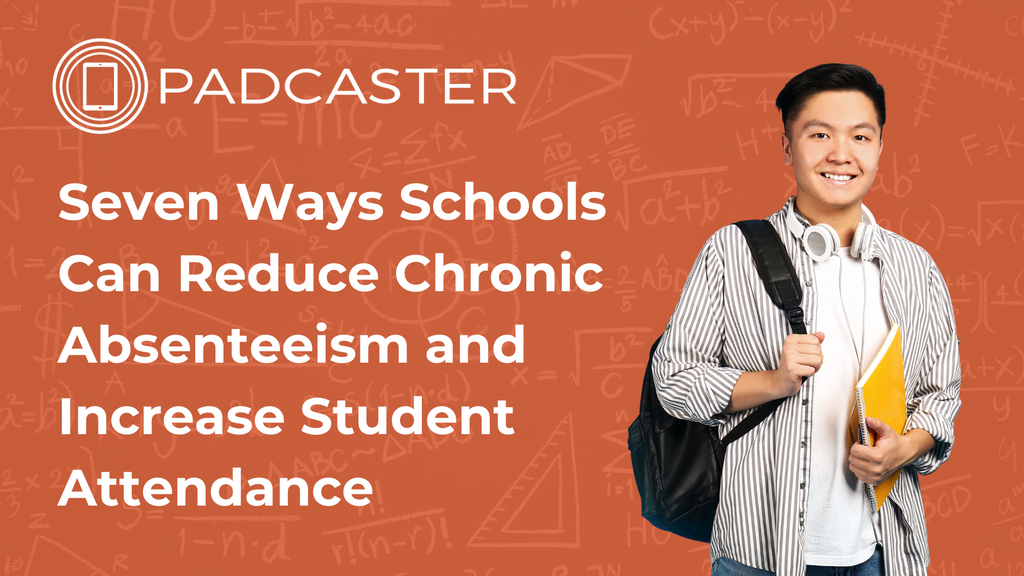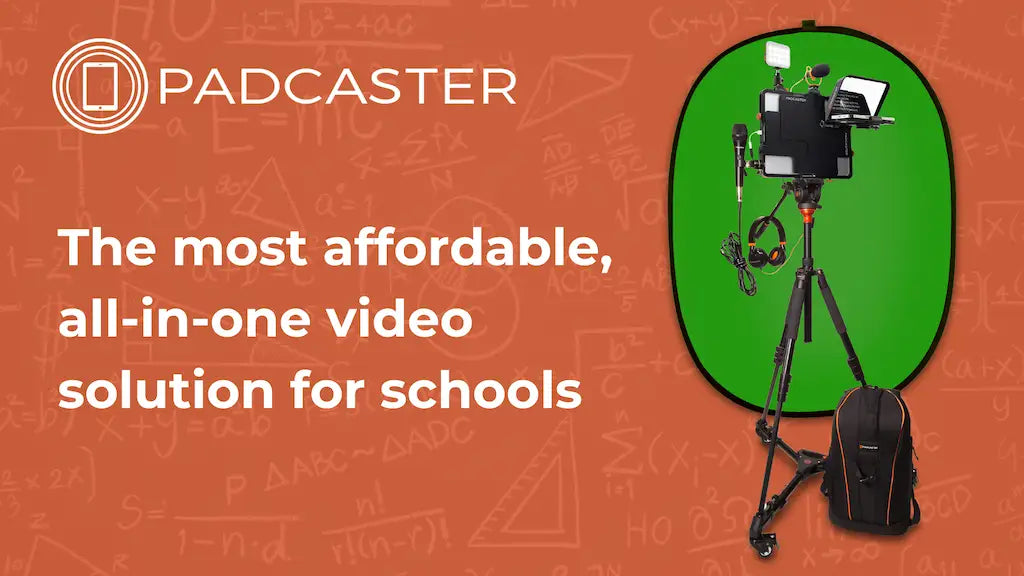
Award-winning elementary school educator and college adjunct Jessica Redcay found her passion for teaching at a young age. Ever since then Ms. Redcay has dedicated her life to helping spark that love of learning in students through finding the best method of instruction for them. This led her to green screen technology and media production as a way to inspire students to not only be lifelong learners but also to be responsible digital citizens.
What led you to start experimenting with green screens? What was your first green screen project?
I have always loved movies. I worked full-time as a manager at Blockbuster throughout college. I had the chance to go to California to learn how movies were made. In 2018, I was selected to attend the PAECT’s Keystone Technology Innovator’s Summit, and in the Summer of ‘18, I learned how to use green screens. After the Summit, I played with green screens. At the beginning of the school year, I created my first green picture with my students in bubbles. It took a lot of app smashing, but I enjoyed creating this image. I saw that Eric Verno posted the background, and he gave me permission to use it in my image. I envisioned surrounding my students in bubbles of love as they enter my classroom. I was able to share that visualization using a green screen.

What is your favorite green screen project?
My favorite green screen project was when I was able to shrink my students so they could walk around a little neighborhood that they built out of shoeboxes.
Also, I love that we can capture a photograph to use as a writing prompt after using a VR field trip. For example, we used a Google Expedition VR field trip to explore the pollution in oceans. Of course, the students loved having the chance to go in a virtual shark cage. We had fun recreating this experience using our green screen. Students were more engaged to write about pollution when it was enhanced with a VR and Green Screen Image. Plus, these experiences help students increase their academic vocabulary because they were actually experiencing the content firsthand.
How do the students react to green screen work and video projects in general?
The students feel empowered when they use green screens. Initially, we partnered with older students so they could teach my second graders how to use green screens. As the year progressed, my students were using the green screens with ease. Then they had the opportunity to act as leaders because they showed kindergarten and first-grade friends how to use green screens too. The students love to create! They are constantly coming up with new ways to express and share their ideas.
Further, students are becoming digital citizens. At ISTE, I learned that they are redefining what it means to be a digital citizen. As early as second grade, I teach the students that their work is their intellectual property, and they need to respect the work of others. The students are not able to use background images without ensuring that they have permission to do so.

You recently had the chance to present at ISTE. What was your session about? Can you tell us about your experience presenting?
At ISTE, I was thrilled to present about 10 Ways to Use Green Screens to Teach ELA at an Elementary Level. I had a great time preparing for the conference, and we had a wonderful turn-out. I had stations set-up for everyone to explore and create. Padcaster set-up two studios for taking green screen pictures too.
My presentation had prizes and support from FlipGrid, Nearpod, Padcaster, DoInkTweets, ChatterPix, CreationCrate, and RoboKind. We had a great time! The best thing (for me) was that people were still connecting with me after my presentation. I was so happy to hear about how they are using green screens in their classrooms.
Also, at ISTE, I had the chance to meet the creators of DoInk and the creator of Padcaster. These are some of my favorite green screen tools so it was an amazing opportunity. DoInk is easy for students to use in the classroom. The creator of Padcaster, Josh Apter, has a background in creating movies so he created a quality tool that is easy to use. Of course, I had to check-out the Marvel exhibit that was at the Franklin Institute. I love the green screen tricks that are used in their movies. I had to play with the filters using Apple Clips, and transform into a comic book character too. Obviously, I had a blast at ISTE! It was so great to have the chance to meet and talk to so many wonderful people involved in education.
Many schools are using green screen in a more traditional filmmaking setting - morning announcements, filmmaking clubs, journalism, etc. How did you decide to incorporate green screen into other subject areas, such as English, where green screen might not be such an obvious fit?
Since I teach elementary school, I teach all of the different content areas. I wanted to use green screens in the classrooms, but I had to find a way to integrate this tool into what I was already teaching. Green screens are versatile. After students learn how to use this tool then students have an unlimited number of possibilities for creating. The best part about using green screens is that sometimes I see my students shine in a new way. I learned about a different aspect of some students as I watched the video or images that they created to respond to literature. My students are able to take the center stage! I love the moments that I fade-away, and I am just there to support them in their learning journey.

What are your goals for the future? Do you have any green screen projects coming down the pipeline?
I am currently in the process of writing books to help other educators. One book I am working on is about how I integrate green screens into my core instruction. There are a lot of books available about greens screens, but we need a book for educators that connects green screens directly to classroom integration. Further, I am working on publishing a children’s book that empowers young girls to pursue the Computer Science field. I am hopeful that I will continue to have the opportunity to present and share my ideas.
I have a lot of ideas for things we are going to try this year. We are going to incorporate more VR and AR into our green screen images. I would like the kids to create their own AR and VR in conjunction with the green screen images. I am going to work with the students on using different camera tricks. I’m excited for the students to use CreationCreate Junior TechCard to create their own automata, which we can then use within a green screen video. We have been coding our robot (Robon from RoboKind) to do different things in front of a green screen. It will be fun to explore the combination of robots and green screens. There are new built-in animation features within the DoInk app that make it easy to create new images. Also, my students are creating more of their own original background images to use with projects. The quality of our images and videos has improved when we started using our Padcaster Studio. Originally, I used a lot of odds and ends, but Padcaster has improved our sound, lighting, etc. I can’t wait to see what the kids are able to create this year!

What tips do you have for other educators using green screen, both in the ELA classroom and beyond?
I have fun using green screens. It brings out my inner child. When teachers have fun teaching then students will have fun learning. If you would like to try using green screens to instruct your learners then go for it. There are so many people (including me) who will be there to support you. Please share your journey so we can connect (Twitter: @RedcayResources). If you already use green screens then please share that with us too! We are stronger when we are able to collaborate and share with one another.
Padcaster transforms your iPad or smartphone into an all-in-one mobile production studio so you can create professional-quality videos from or anywhere. Whether it’s for telecommuting, remote broadcasting or livestreaming -- Padcaster will help you produce high-quality content wherever you are. Fill out the form below to get in touch with one of our sales consultants!
By Marin MoralesNeed More Information?
Fill out the form here to get in touch with a member of the Padcaster Team.


